Motivating More People in Honduras to Get the COVID-19 Vaccine
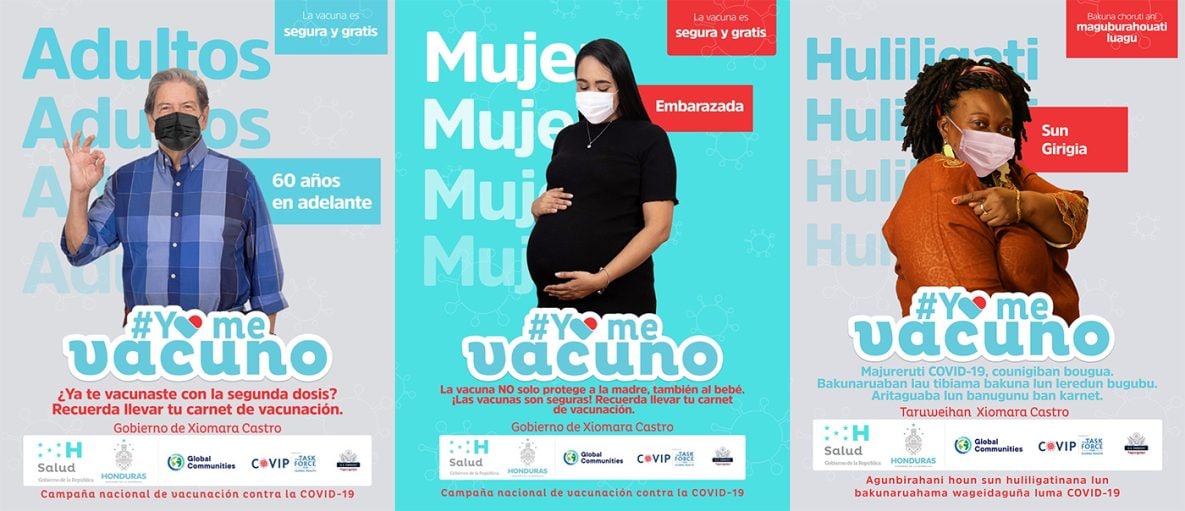
U.S. CDC in Honduras worked with the Ministry of Health to create posters that inform specific population groups about the benefits of the COVID-19 vaccine. Photos from MOH/Secretaría de Salud de Honduras.
Summary
- U.S. CDC in Honduras supported the health ministry’s efforts to expand access to COVID-19 vaccines to prevent serious illness and death.
- U.S. CDC’s representative in Honduras worked with colleagues at the Ministry of Health to create a communications campaign to increase the number of people getting vaccinated.
- The Ministry of Health in Honduras deployed teams of health care workers who went door to door to give residents a COVID-19 vaccine in their homes.
- By March 2023, 67% of people aged 6 months or older had received two doses, and 57% of the population had been boosted.
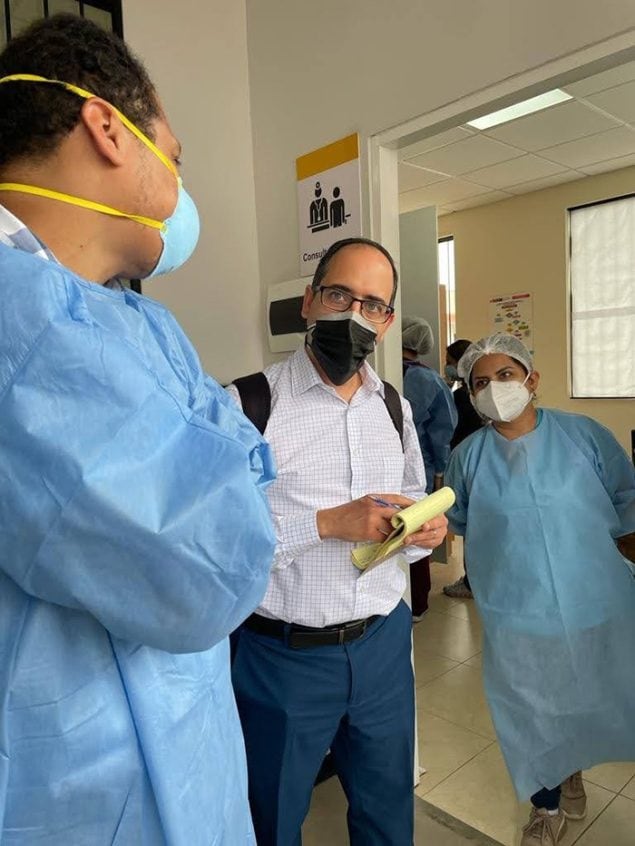
U.S. CDC public health expert Nasim Farach meets with medical staff at a COVID-19 vaccination site in Honduras. Photo by Emily Zielinski-Gutierrez/CDC
The U.S. Centers for Disease Control and Prevention (U.S. CDC) has collaborated with public health institutions in the Central America Region since the 1960s. Nasim Farach is a public health specialist and the U.S. CDC Representative in Honduras. He has worked with health officials in Honduras for the past 11 years, looking for the causes of infectious disease outbreaks, identifying high-risk groups, and developing prevention and control strategies.
When COVID-19 was declared a pandemic in 2020, Honduras moved quickly to contain the spread of the new virus. At first, the U.S. CDC donated crucial laboratory equipment and supplies, COVID-19 antigen tests, personal protective equipment, and computers and printers to improve disease detection and management at triage centers.
U.S. CDC also provided technical assistance to strengthen rapid response teams that tested people for SARS CoV-2, the virus that causes COVID-19, in their communities.
When the first COVID-19 vaccines arrived in Honduras, demand was high. But as in most countries, the number of doses was limited. So, health officials prioritized who would get them first until more arrived.
In addition to frontline healthcare workers, people aged 75 years and older were the first to get the vaccine because they were at high risk of getting very sick. When more vaccines arrived, people between the ages of 70 and 75 were eligible. And when even more doses of vaccine arrived, those between the ages of 65 and 70 were eligible. As more vaccines were available, adults with existing conditions like diabetes or high blood pressure also had access to the vaccines, even if they were younger.
During this time, CDC staff worked with health officials to create messages and communication campaigns to inform the people of Honduras about the benefits of these new vaccines.
In December 2021, the Ministry of Health (MOH) began offering COVID-19 vaccine boosters to all adults aged 18 years and older. “Vaccinations really picked up in late 2021 and at the beginning of 2022,” says Farach. “Interest in getting boosters bumped up a little in May 2022, but then demand plateaued,” he adds.
Increasing Demand for COVID-19 Vaccines When Supply Is High
U.S. government donations of COVID-19 vaccines through the COVAX platform significantly increased the amount of vaccine in Honduras. With more vaccines available for the general public, health officials could focus on more people getting vaccinated. The MOH goal was to protect everyone who hadn’t been vaccinated yet from serious health complications related to COVID-19.
Farach worked with MOH colleagues and CDC partners Task Force for Global Health and Global Communities to create a communication campaign designed to increase the demand for the vaccine.
They developed a multimedia campaign tailored to reach people at higher risk for serious illness. It included TV and radio spots that were broadcast on national media and community radio stations.
Health officials also created posters that were directed at specific groups, including people over age 60 years, people with underlying health conditions, children, and people in parts of the country where Garifuna, Miskito, and Bay Islander English languages are spoken instead of Spanish. Health care workers hung these posters promoting vaccination in the waiting rooms of the network of MOH health centers and other public areas in the communities.
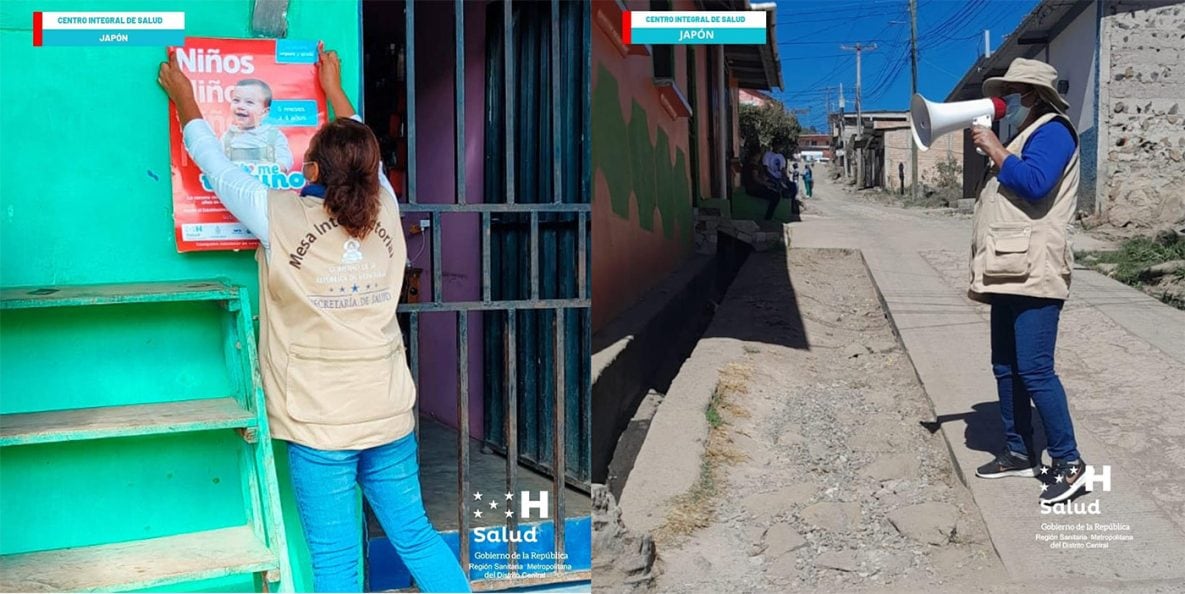
In 2022, U.S. CDC assisted the Honduras Ministry of Health in creating a multi-faceted communications campaign to increase COVID-19 vaccine demand. Photos by MOH/ Secretaría de Salud de Honduras
Going Door to Door to Get the Message Out
The MOH used community brigades to reach more people. These teams of healthcare workers were deployed to go door to door and offer the COVID-19 vaccine.
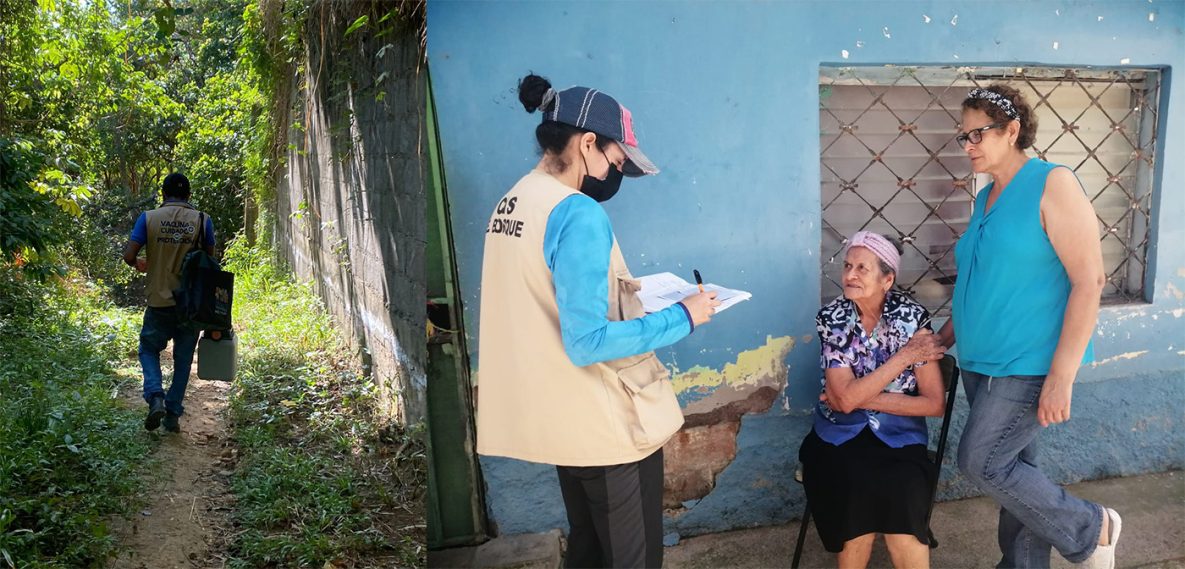
Health workers traveled to remote areas of Honduras and went door to door to tell residents about the benefits of getting the COVID-19 vaccine. Photos by MOH/Secretaría de Salud de Honduras
They focused on people at highest risk of experiencing serious COVID-19 complications, particularly people over age 65 years and people with underlying conditions. These teams were equipped to give residents any other recommended vaccines as well. Since far fewer people listen to the radio these days, the most efficient way to tell residents about the arrival of vaccination brigades was to broadcast from roaming vehicles as these teams visited communities. Health workers also walked through neighborhoods using bullhorns to inform people about the importance and availability of getting COVID-19 vaccines.
Creating More Demand for COVID-19 Vaccines Among Pregnant Women
Health officials also focused on vaccinating more pregnant women because the vaccination rate among pregnant women was particularly low.
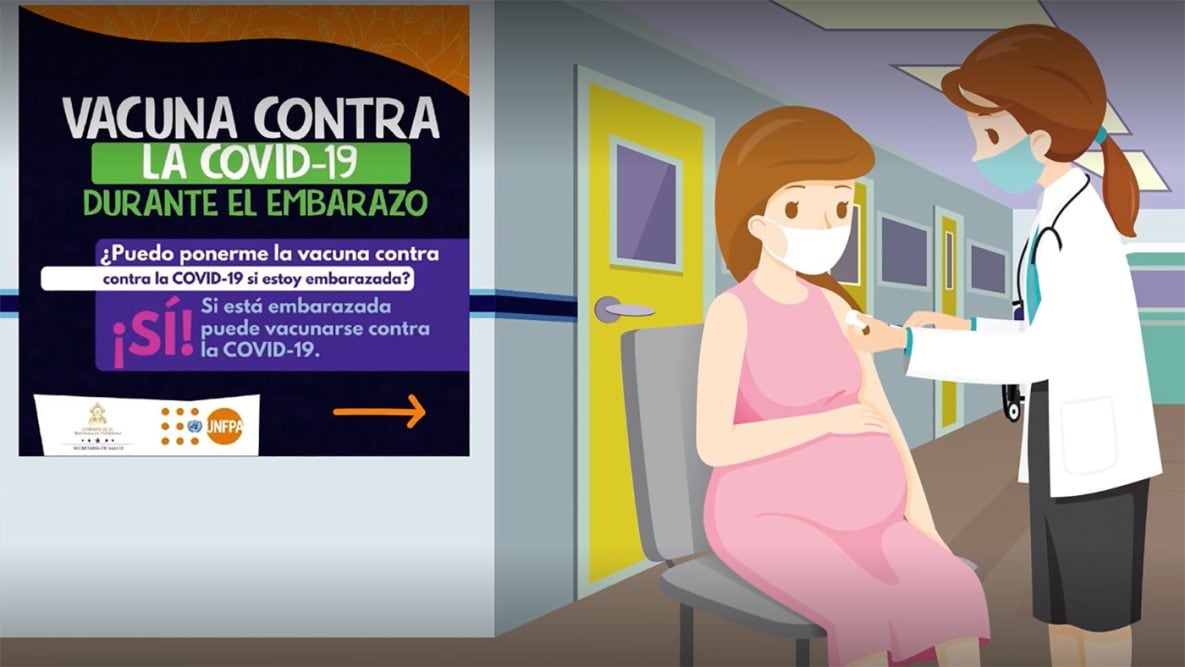
Image from a TV commercial that tells pregnant women how COVID-19 vaccines protect them and their unborn child from serious illness or death. Image from MOH/Secretaría de Salud de Honduras
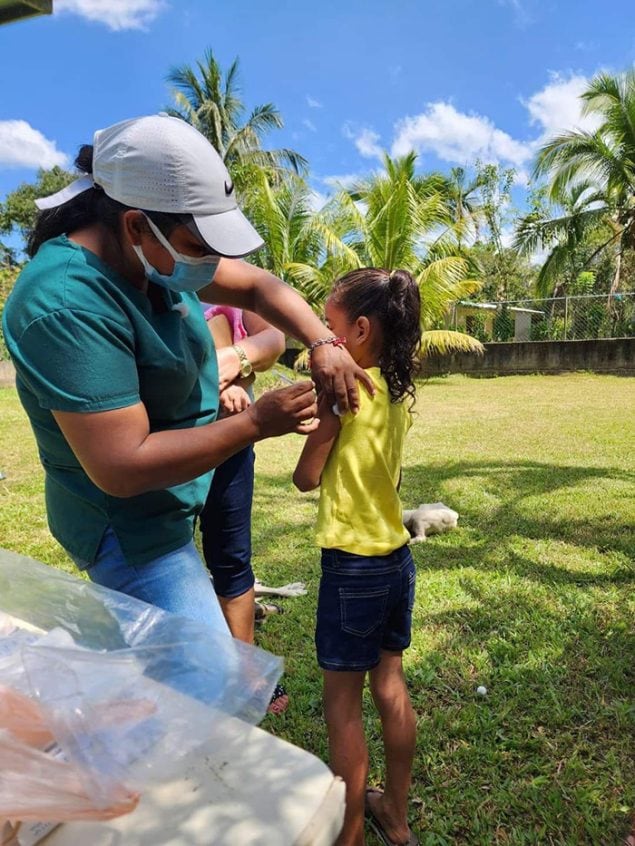
A young girl receives the COVID-19 vaccine during a U.S. CDC-supported vaccination campaign in Honduras in 2022. Photo by MOH/ Secretaría de Salud de Honduras
Farach worked with health officials to develop a campaign that spoke directly to those expecting a baby. The message was simple: getting the COVID-19 vaccine protects both the soon-to-be parent AND the unborn child.
U.S. CDC supported the design, printing, and distribution of posters promoting COVID-19 vaccinations in prenatal care clinics across the country. Vaccination rates among pregnant women in Honduras rose from 12% in August 2021 to 51% by the end of 2022.
Expanding Community Brigades to Vaccinate More People of All Ages
By March 2023, 67% of people aged 6 months or older had received two doses, and 57% of the population had been boosted.
“As of October 2022, CDC is not providing additional support for the COVID-19 communications campaign, but the Ministry of Health is still using and adapting the communications materials we jointly developed,” says Farach. “So the work created during the pandemic continues to bring benefits to the people of Honduras.”
U.S. CDC is currently working with the Honduran MOH to expand the community brigades, so they can vaccinate eligible household members against COVID-19 and other vaccine-preventable diseases. It is also helping health officials assess lessons learned from COVID-19 to improve MOH’s ability to respond to future pandemics.